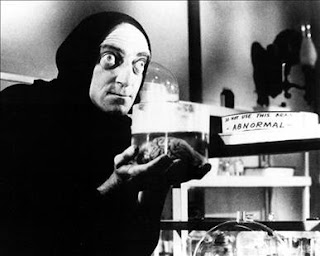Today is World Mental Health Day. I took my dog and pony show to a lunch time presentation on mental health and stigma, given by the former Prime Minister of Norway, Mr. Kjell Magne Bondevik.
Prime Minister Bondevik briefly considered resigning as Prime Minister in 1998 due to depression. He was urged not to resign, but to seek treatment and make this known to the Norwegian public. Three and a half weeks later, he resumed his duties, having succesfully engaged in walking and talking therapy with his psychiatrist, who took him on long walks up the mountains. Medications were also part of this therapy. He received top drawer treatment being the Prime Minister, and a Norwegian one at that, but he was also suffering from a top drawer diagnosis, depression, a time-limited condition. More importantly, the public thinks it understands, and is therefore sympathetic to depression, because it is so easily relatable to sad events in one’s own life. Schizophrenia is not at all easily understood by the public. There are some people whose schizophrenia, like their depression, may be biochemical in nature and therefore can be “corrected” employing short term orthomolecular or drug therapy, but for a lot of people, the cause of the condition is higher up the food chain, so to speak, and related to the same things that make a depressed person, depressed.
I was madly scribbing some ideas to challenge his contention that people should be open and honest about their mental health problems. I think three and half weeks of major depression makes him a credible spokesperson, but I doubt he’s got the full picture of what a major mental health label will do for someone over the long term.
So, I raised my hand and said that anti-stigma campaigns were all well and good, but the cause of stigma is more complex. Why do people discriminate in the first place? I said that as a mother of a son with a diagnosed major mental illness, I would not be so open about opening up and I cited the Sheila Mehta (Auburn University) study*, which found that stigma is increased if people think you have a mental illness caused by a biochemical imbalance as opposed to a mental illness resulting from understandable events in a person’s life. Today, of course, everybody thinks mental illness is caused by a biochemical imbalance. I can run the numbers. This means that a large number of people are willing to discriminate against you.
I made my point. I sat down. Mr. Bondevik’s answer didn’t address my point about belief in the biochemical basis of the condition increasing stigma. He said it was everyone’s personal decision about how much they wanted to open up about their mental illness. Fine, sure, but the Mehta study has raised some provocative issues about stigma that need further thoughtful discourse.
People who know that Chris was diagnosed with a major mental illness (in this case, the S-word), from what they have said to me, think Chris is somehow fundamentally flawed, will always be a “burden” to some extent in Ian’s and my life, and they feel that as long as he stays on his medications he will be able to “cope.” Gee, Chris is doing well,” they may say, “the medications must be working.” Had I not blabbed away the diagnosis in the first place, and did not let people know Chris has been on medications, the Mehta study suggests that people would not single him out as different, and therefore not apply the same pessimistic outlook.
_______________________
Mehta, S. , & Farina, A. (1997). Is being sick really better? Effect of the disease view of mental disorder on stigma. Journal of Social and Clinical Psychology, 16(4), 405-419.
